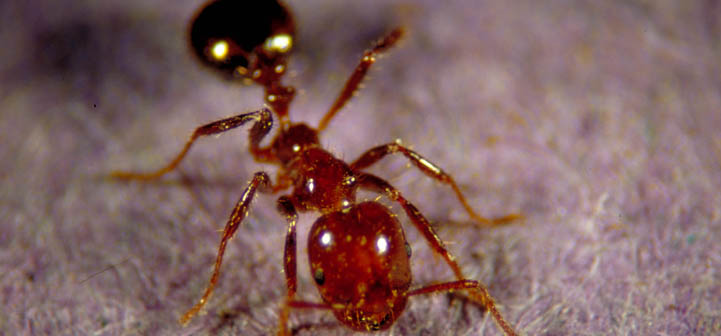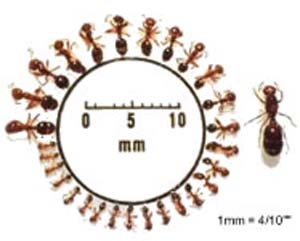FA Youth Home > Lessons: Fire Ants and Big-Headed Ants and Crazy Ants – Oh My!
Overview
More than 900 different types, or species, of ants are native to the United States. This number does not include imported fire ants because they are not native to the United States – they were imported by accident. Several of these native species of ants are common; others usually go unnoticed.
Some of the commonly seen ants (including imported fire ants) are pests in and around homes. Others live in lawns and other places, but are not considered pests.
Most ant species are beneficial because:
- They aerate the soil, which allows air and water to reach plant roots more easily.
- They feed on a wide variety of foods, most of which are other insects, including pest insects.
Some ants, such as sugar ants, crazy ants, carpenter ants and fire ants, are harmful because they sometimes live in our homes and may damage our homes or landscape. Texas leaf cutting ants actually cut leaves off trees and other plants and carry the pieces back into their nests. The ants use the leaves to grow fungus, which they eat. See more about Texas leaf cutting ants.
It is important to know which ants are helpful and which ants have the potential to be pests. Some ants even help humans by battling fire ants in “ant-to-ant” combat. In areas where there are not many imported fire ants, native ants can flourish and keep fire ants at bay. But areas where many fire ants live have very few, if any, other ant species.
The most common types of ants we see outdoors are big-headed ants, little black ants, false honey ants, pavement ants, acrobat ants, carpenter ants, crazy ants, red harvester ants, Texas leaf cutting ants, native fire ants and imported fire ants. See related information on these ants.
Of those species, the ants that are successful competitors with imported fire ants are pavement ants, little black ants, crazy ants and native fire ants. Areas where these types of ants are present contain much fewer fire ants than others on average; areas with many fire ants have very few of these competitor ants. If given the opportunity, these competitor ants can kill very small colonies of fire ants.
 |
 |
| Looks can be deceiving. This looks like an ant, but it’s a wasp! It’s called a red velvet ant or cow killer. Photo by Bart Drees. | Texas leafcutting ant. Photo by Bart Drees. |
Vocabulary words
Activities



